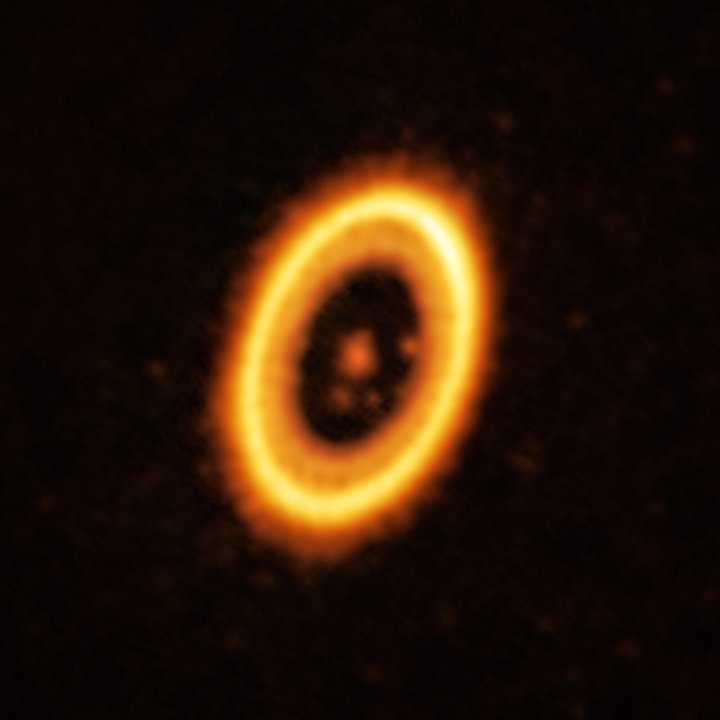The vast majority of exoplanets that have been discovered are within star systems broadly similar to our solar system: one (or sometimes two or more) stars at the center, with planets orbiting at a variety of distances. But recent research has turned up something very unusual: what could be two exoplanets sharing the same orbit, which, if it is confirmed, would be the first discovery of its kind.
Astronomers used a ground-based array called the Atacama Large Millimeter/submillimeter Array (ALMA) to investigate the system around star PDS 70, located 400 light-years away, with two known exoplanets orbiting it called PDS 70 b and c. But observations of PDS 70 b identified a cloud of debris in its orbit which could form into a sibling planet sharing the same orbit.

“Two decades ago it was predicted in theory that pairs of planets of similar mass may share the same orbit around their star, the so-called Trojan or co-orbital planets. For the first time, we have found evidence in favor of that idea,” said lead author Olga Balsalobre-Ruza of the Centre for Astrobiology in Madrid in a statement.
There are plenty of examples of small bodies sharing the orbit of a planet in our solar system, such as the Jupiter Trojan asteroids. There are even asteroids that share Earth’s orbit. But astronomers have never seen Trojans outside our solar system, and have never seen a Trojan planet though they have been theorized to exist.
“Exotrojans [Trojan planets outside the Solar System] have so far been like unicorns: they are allowed to exist by theory but no one has ever detected them,” said co-author Jorge Lillo-Box, also of the Centre for Astrobiology.
The relevance of the cloud of debris found in the PDS 70 system is that it has significant mass — the researchers estimate that the cloud has around twice the mass of our moon — so it could be in the process of forming into a second planet. Or there could even be a planet already there within the dust.
“Who could imagine two worlds that share the duration of the year and the habitability conditions? Our work is the first evidence that this kind of world could exist,” says Balsalobre-Ruza. “We can imagine that a planet can share its orbit with thousands of asteroids as in the case of Jupiter, but it is mind-blowing to me that planets could share the same orbit.”
To learn more, the researchers plan to use ALMA again in 2026 to look at the system and see how the planet and the cloud have moved in their orbit.
The research is published in the journal Astronomy & Astrophysics.



